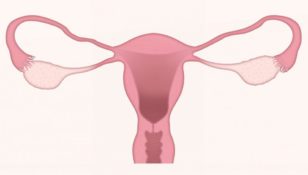Keto Diet: A Comprehensive Guide to Understanding and Embracing the World of Keto Food

Introduction:
In recent years, the ketogenic diet, commonly known as the keto diet, has gained significant popularity among individuals looking to improve their health and achieve weight loss. This article aims to provide a deep understanding of keto food and its importance for those interested in this subject. Whether you’re a beginner or seeking to expand your knowledge, let’s delve into the intricacies of the keto diet and explore its historical evolution.
I. Understanding Keto Food:

The keto diet revolves around achieving a state of ketosis, wherein the body burns fat as its primary fuel source, rather than carbohydrates. To achieve and maintain ketosis, it is essential to consume a highly specific ratio of macronutrients. These macros typically include a low intake of carbohydrates, moderate protein, and high amounts of healthy fats. By restricting carbohydrates, the body gradually shifts into a metabolic state that enables it to efficiently burn fat for energy.
Furthermore, it is crucial to distinguish between “good” and “bad” fats. Healthy fats, such as avocados, olive oil, and nuts, are fundamental in the keto diet as they provide essential nutrients and satisfy hunger. On the other hand, unhealthy fats should be avoided, such as trans fats and highly processed oils.
II. Evolution of Keto Food:
The history of keto food can be traced back to the early 20th century when the ketogenic diet was introduced as a therapeutic approach to treating epilepsy. Over time, medical professionals and researchers began to recognize the potential benefits of the keto diet for weight loss, diabetes management, and overall health improvement.
In recent years, the popularity of the ketogenic diet has soared, leading to an explosion of keto-friendly products in the market. Food manufacturers have responded to the demand by creating a wide array of options, ranging from keto-approved snacks to ready-to-eat meals. This development has made it easier for individuals to adhere to the diet and enjoy a diverse range of options while staying in ketosis.
III. Structuring Text for Featured Snippet:
1. The Importance of Keto Food:
– Understanding the role of keto food in achieving weight loss and better health
– Exploring the science behind the ketogenic diet and the process of ketosis
– Highlighting the benefits of consuming healthy fats and reducing carbohydrate intake
2. Evolution of Keto Food:
– Tracing the origins of the ketogenic diet as a therapeutic measure for epilepsy
– Charting the transformation of the diet from medical treatment to a lifestyle choice
– Analyzing the impact of the growing demand for keto-friendly products on the market
3. Key Components of a Keto Diet:
– Crafting bulleted lists of essential keto-friendly foods to include in a daily diet
– Emphasizing the significance of macronutrient ratios and maintaining a state of ketosis
– Discussing common challenges and offering tips for navigating the keto lifestyle
4. Recipes and Meal Ideas:
– Providing a selection of keto recipes, including breakfast, lunch, dinner, and snack options
– Suggesting meal plans suitable for individuals with different dietary preferences
– Offering practical and creative ideas to inspire and support those on a keto diet
Conclusion:
The world of keto food continues to evolve, offering exciting possibilities for individuals seeking a healthy and sustainable way of eating. By understanding the foundations and historical development of the keto diet, as well as exploring its key components, you can confidently embark on this rewarding journey towards better health and well-being. Remember, consultation with a healthcare professional is always advised before making any major dietary changes. Enjoy the benefits and flavors of keto food while embracing a more vibrant lifestyle.

















